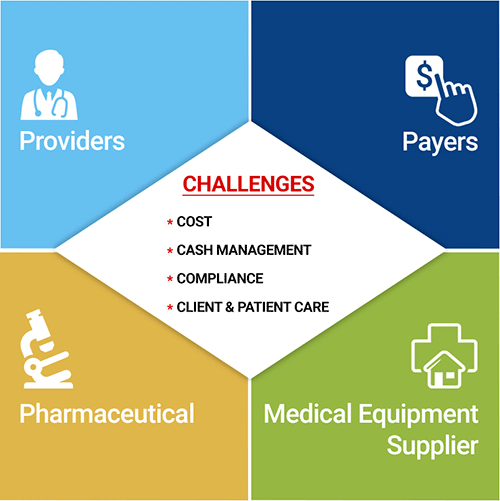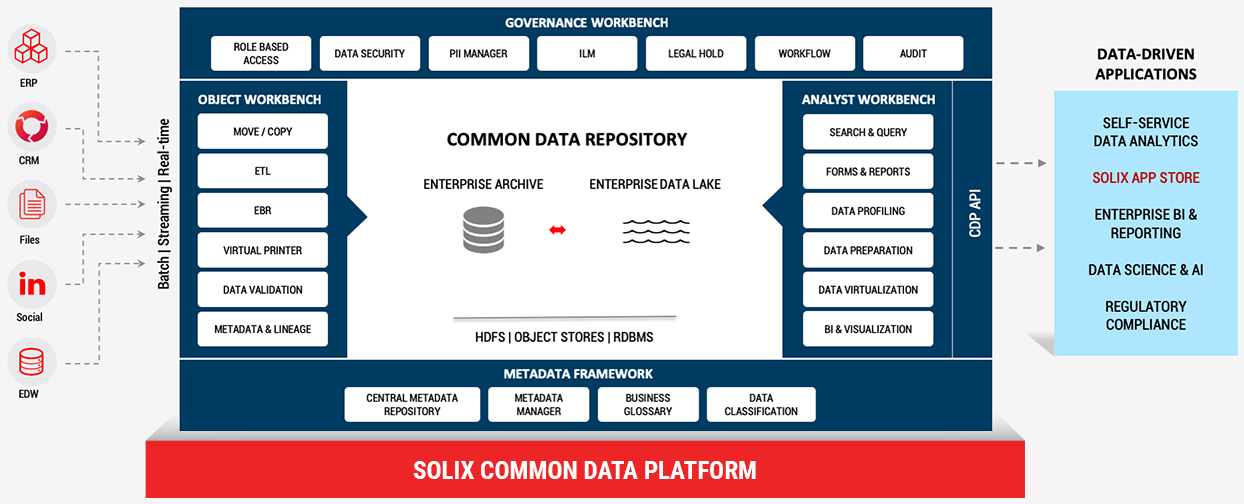
Data lakes: A huge opportunity to optimize healthcare data costs
Data is king, and it isn’t more true than in the healthcare industry — where on-demand data, aided by big data and analytics, can be the difference between life and death for a patient. The healthcare revolution is on, and Solix is championing this with our cutting edge solution to optimize healthcare data costs.
We are witnessing a data-driven healthcare revolution with widespread digitization of electronic health record systems. But with compelling opportunities, we also see massive data volumes, enabled by IoT medical devices such as Fitbits — which measure steps, heart rate, blood sugar, blood pressure, calorie intake, and much more — resulting in evolving patient expectations and expanding regulations. Data in varying formats from an increasing array of sources must be considered to ensure optimal outcomes, whether obtaining a diagnosis, ensuring accurate claims processing, developing new pharmaceutical treatments, or addressing regulatory challenges of medical equipment.
However, this is only a fraction of data generated within the healthcare industry, which will experience a compound annual growth rate (CAGR) of 36 percent through 2025. By ‘number crunching’ all of this structured and unstructured data, healthcare organizations have the ability to change the lives of their patients for the better.
In the context of a healthcare provider, this can mean looking through complex variables and disparate data such as lab tests, family history, and diagnoses, building a 360 degree patient view to create predictive recommendations and proactive intervention with the patient, even making life-saving decisions in real-time, while the patient is being operated on.
But how is this done? Managing the three V’s of data (volume, velocity, and variety) is not easy — it requires a robust IT infrastructure designed to handle a large influx of varying data that meets strict data governance and compliance requirements, while powering decisions with next-generation big data analytics tools.
The Solix Common Data Platform (CDP) for Healthcare is designed to specifically optimize healthcare data costs and compliance, which is a data-driven enterprise blueprint for many types of healthcare organizations including providers, payers, medical equipment suppliers, and pharmaceutical companies. Solix CDP has a robust ingestion engine that handles structured, unstructured and semi-structured data, applying the governance, security and compliance to this data. Taking the aforementioned hospital scenario for example, the Solix CDP is able to copy or move traditional data from systems like Oracle or IBM and store it with other varying data such as doctor’s notes, radiology reports, emails, CAT scans, videos, and even historical social media data into a secure, self-contained repository, called a ‘data lake’.

Once data has been ingested into the data lake, it can be analyzed through a variety of archival, search, discovery, and analytics tools, to deliver the true value of that data. In the provider scenario, the data can be analyzed with a set of robust big data tools to provide proactive and predictive recommendations to the doctor, including a real-time patient dashboard.
Furthermore, the Solix CDP is designed with other systems in mind — healthcare organizations that are already using an ERP or data warehousing system can easily plug their data directly into the Solix CDP. The Solix CDP also works the other way, supporting many external analysis tools including Tableau, Qlik and Netezza.
To define a better tomorrow for the healthcare ecosystem, healthcare organizations should embrace a common data platform approach to all their data, to optimize healthcare data costs.
To download our whitepaper on Data-driven Healthcare for Providers, click here.
To download our whitepaper on Data-driven Healthcare for Manufacturers, click here.
To download our whitepaper on Data-driven Healthcare for the Pharmaceutical Industry, click here.
To download our whitepaper on Data-driven Healthcare for Payers, click here.




